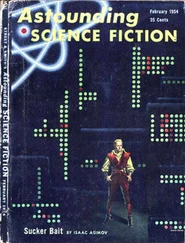When it was first said that the sun stood still and the world turned round, the common sense of mankind declared the doctrine false; but the old saying of vox populi, vox Dei , as every philosopher knows, cannot be trusted in science. Reason tells me, that if numerous gradations from an imperfect and simple eye to one perfect and complex, each grade being useful to its possessor, can be shown to exist, as is certainly the case; if further, the eye ever slightly varies, and the variations be inherited, as is likewise certainly the case; and if such variations should ever be useful to any animal under changing conditions of life, then the difficulty of believing that a perfect and complex eye could be formed by natural selection, though insuperable by our imagination, cannot be considered real.
We may smile slightly when we notice that Darwin wrote of the sun standing still, and when we notice that he spoke of the eye’s “perfection,” but only because we are fortunate enough to know more than he did. What is worth noting, and retaining, is his proper use of the sense of what is wondrous.
The real “miracle” is that we, who share genes with the original bacteria that began life on the planet, have evolved as much as we have. Other creatures did not develop eyes at all, or developed extremely weak ones. There is an intriguing paradox here: evolution does not have eyes but it can create them. The brilliant Professor Francis Crick, one of the discoverers of the double helix, had a colleague named Leslie Orgel who encapsulated this paradox more elegantly than I can. “Evolution,” he said, “is smarter than you are.” But this compliment to the “intelligence” of natural selection is not by any means a concession to the stupid notion of “intelligent design.” Some of the results are extremely impressive, as we are bound to think in our own case. (“What a piece of work is a man!” as Hamlet exclaims, before going on to contradict himself somewhat by describing the result as a “quintessence of dust”; both statements having the merit of being true.) But the process by which the results are attained is slow and infinitely laborious, and has given us a DNA “string” which is crowded with useless junk and which has much in common with much lower creatures. The stamp of the lowly origin is to be found in our appendix, in the now needless coat of hair that we still grow (and then shed) after five months in the womb, in our easily worn-out knees, our vestigial tails, and the many caprices of our urinogenital arrangements. Why do people keep saying, “God is in the details”? He isn’t in ours, unless his yokel creationist fans wish to take credit for his clumsiness, failure, and incompetence.
Those who have yielded, not without a struggle, to the overwhelming evidence of evolution are now trying to award themselves a medal for their own acceptance of defeat. The very magnificence and variety of the process, they now wish to say, argues for a directing and originating mind. In this way they choose to make a fumbling fool of their pretended god, and make him out to be a tinkerer, an approximator, and a blunderer, who took eons of time to fashion a few serviceable figures and heaped up a junkyard of scrap and failure meanwhile. Have they no more respect for the deity than that? They unwisely say that evolutionary biology is “only a theory,” which betrays their ignorance of the meaning of the word “theory” as well as of the meaning of the word “design.” A “theory” is something evolved—if you forgive the expression—to fit the known facts. It is a successful theory if it survives the introduction of hitherto unknown facts. And it becomes an accepted theory if it can make accurate predictions about things or events that have not yet been discovered, or have not yet occurred. This can take time, and is also subject to a version of Ockham’s procedure: Pharaonic astronomers in Egypt could predict eclipses even though they believed the earth to be flat: it just took them a great deal more unnecessary work. Einstein’s prediction of the precise angular deflection of starlight due to gravity—verified during an eclipse off the west coast of Africa that occured in 1913—was more elegant, and was held to vindicate his “theory” of relativity.
There are many disputes between evolutionists as to how the complex process occurred, and indeed as to how it began. Francis Crick even allowed himself to flirt with the theory that life was “inseminated” on earth by bacteria spread from a passing comet. However, all these disputes, when or if they are resolved, will be resolved by using the scientific and experimental methods that have proven themselves so far. By contrast, creationism, or “intelligent design” (its only cleverness being found in this underhanded rebranding of itself) is not even a theory . In all its well-financed propaganda, it has never even attempted to show how one single piece of the natural world is explained better by “design” than by evolutionary competition. Instead, it dissolves into puerile tautology. One of the creationists’ “questionnaires” purports to be a “yes/no” interrogation of the following:
Do you know of any building that didn’t have a builder?
Do you know of any painting that didn’t have a painter?
Do you know of any car that didn’t have a maker?
If you answered YES for any of the above, give details.
We know the answer in all cases: these were painstaking inventions (also by trial and error) of mankind, and were the work of many hands, and are still “evolving.” This is what makes piffle out of the ignorant creationist sneer, which compares evolution to a whirlwind blowing through a junkyard of parts and coming up with a jumbo jet. For a start, there are no “parts” lying around waiting to be assembled. For another thing, the process of acquisition and discarding of “parts” (most especially wings) is as far from a whirlwind as could conceivably be. The time involved is more like that of a glacier than a storm. For still another thing, jumbo jets are not riddled with nonworking or superfluous “parts” lamely inherited from less successful aircraft. Why have we agreed so easily to call this exploded old nontheory by its cunningly chosen new disguise of “intelligent design”? There is nothing at all “intelligent” about it. It is the same old mumbo-jumbo (or in this instance, jumbo-mumbo).
Airplanes are, in their human-designed way, “evolving.” And so, in a quite different way, are we. In early April 2006 a long study at the University of Oregon was published in the journal Science . Based on the reconstruction of ancient genes from extinct animals, the researchers were able to show how the nontheory of “irreducible complexity” is a joke. Protein molecules, they found, slowly employed trial and error, reusing and modifying existing parts, to act in a key-and-lock manner and switch discrepant hormones “on” and “off.” This genetic march was blindly inaugurated 450 million years ago, before life left the ocean and before the evolution of bones. We now know things about our nature that the founders of religion could not even begin to guess at, and that would have stilled their overconfident tongues if they had known of them. Yet again, once one has disposed of superfluous assumptions, speculation about who designed us to be designers becomes as fruitless and irrelevant as the question of who designed that designer. Aristotle, whose reasoning about the unmoved mover and the uncaused cause is the beginning of this argument, concluded that the logic would necessitate forty-seven or fifty-five gods. Surely even a mono-theist would be grateful for Ockham’s razor at this point? From a plurality of prime movers, the monotheists have bargained it down to a single one. They are getting ever nearer to the true, round figure.
Читать дальше












